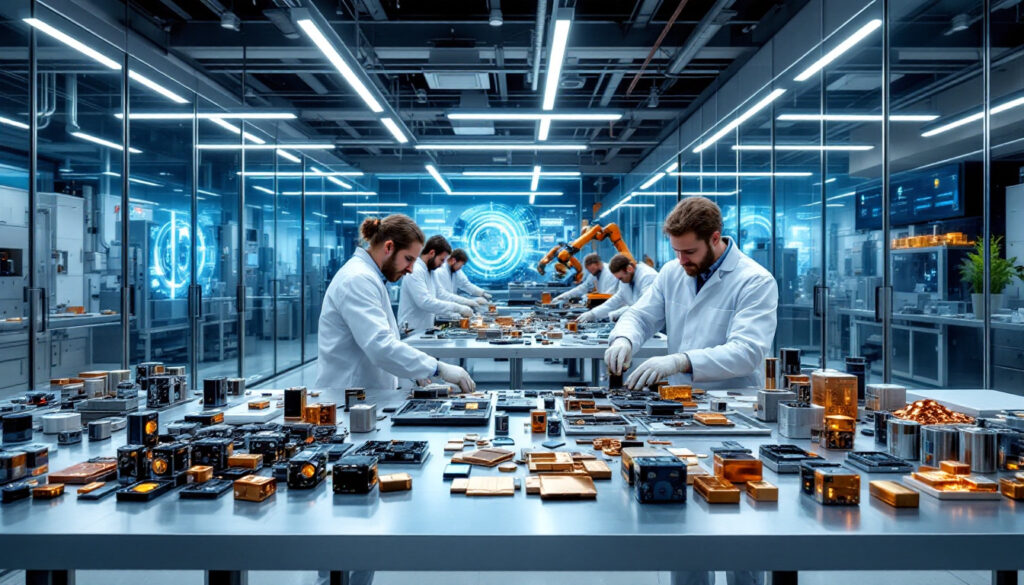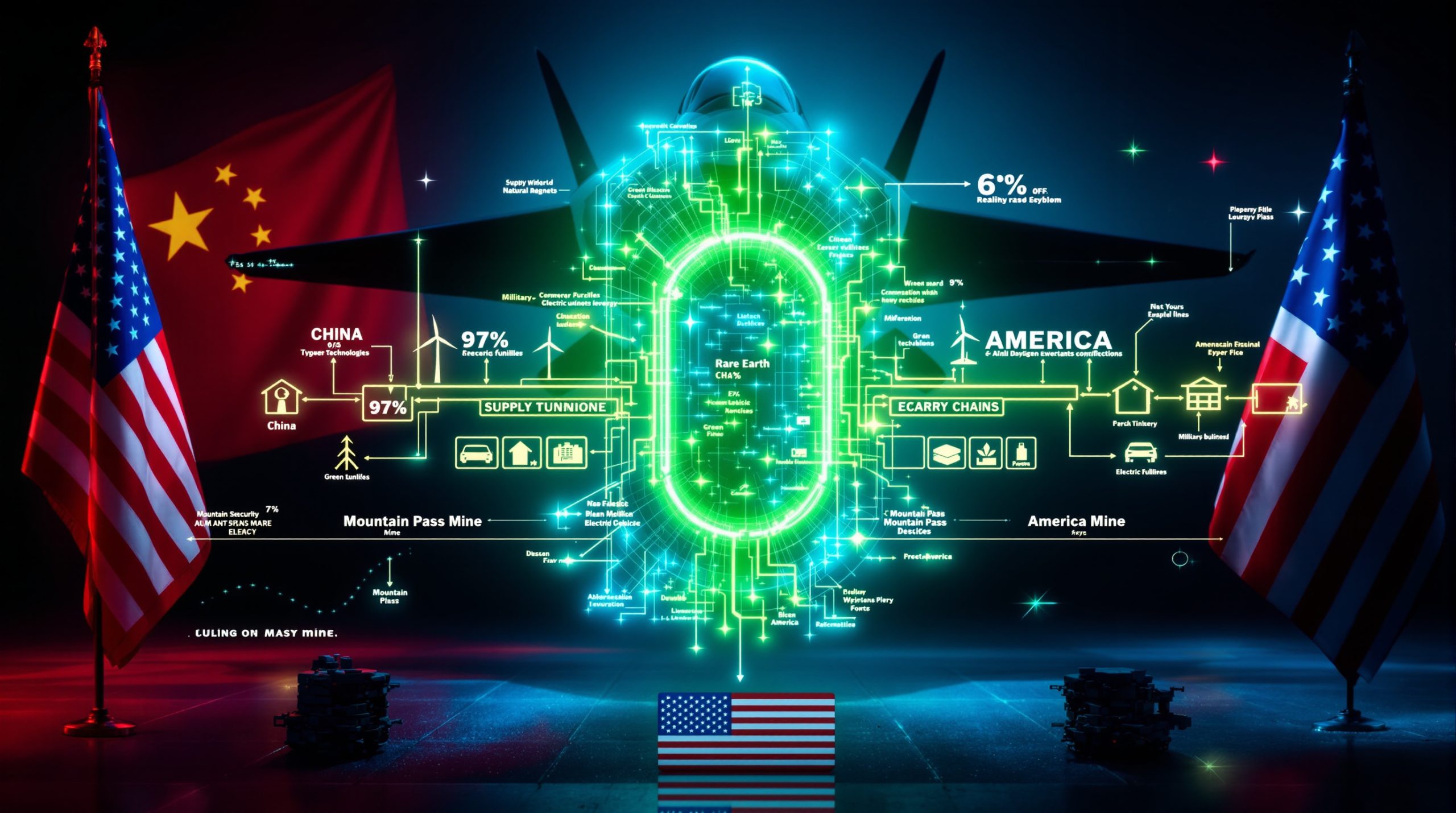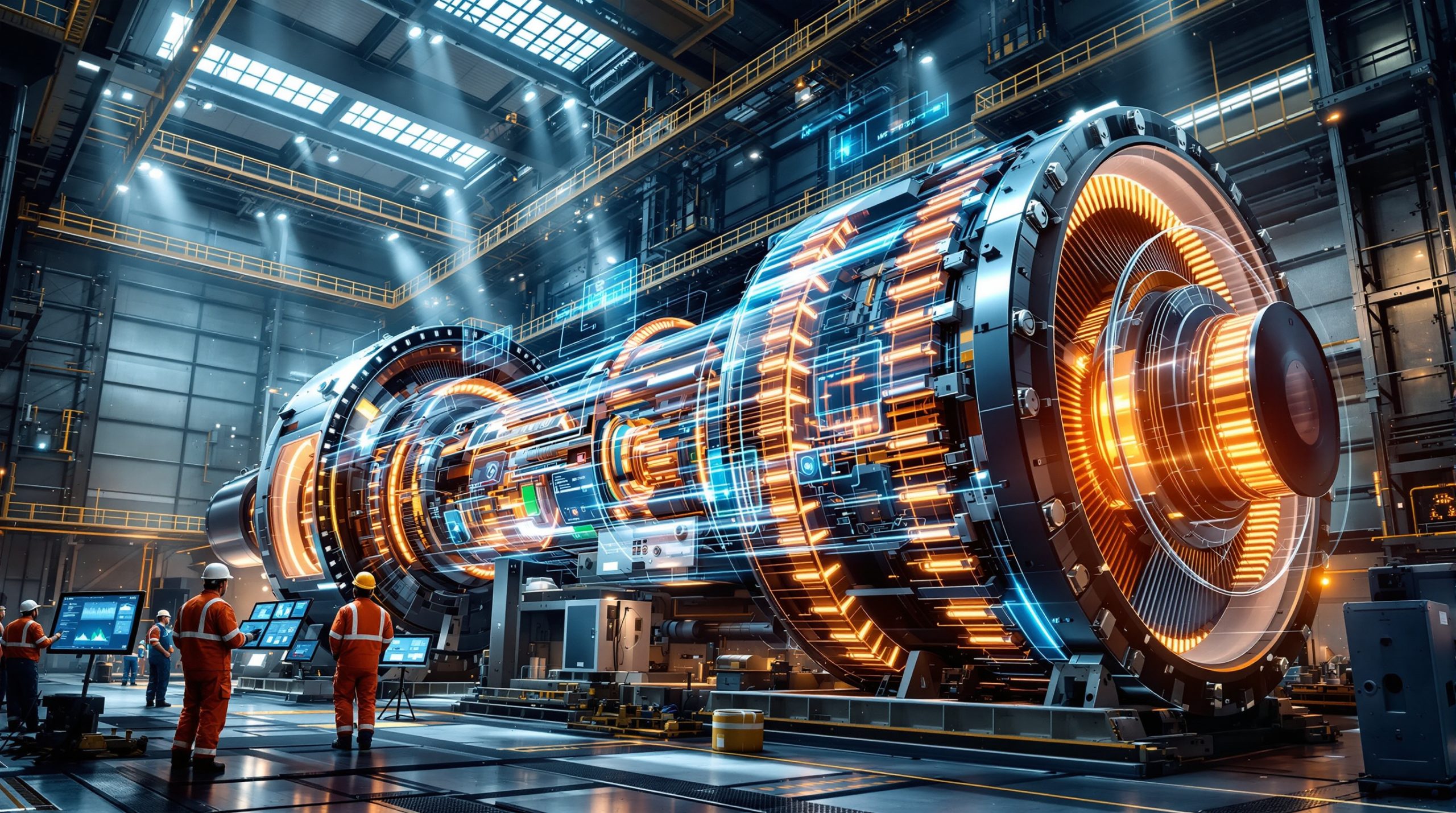Redwood Materials' New San Francisco R&D Center: Advancing Battery Recycling Innovation
Redwood Materials, founded by former Tesla CTO JB Straubel, has announced the establishment of a cutting-edge 15,000-square-foot research and development facility in San Francisco, marking a significant expansion in battery recycling innovation. Operational since April 10, 2025, this strategic investment positions the company to accelerate sustainable battery technology development while strengthening domestic supply chains for critical battery materials. The new center represents a pivotal step in addressing the growing demand for responsibly sourced battery components in the rapidly expanding electric vehicle market.
The San Francisco facility will focus on pioneering advanced recycling technologies that can recover over 95% of critical minerals from spent lithium-ion batteries, including valuable elements like lithium, cobalt, nickel, and copper. This breakthrough efficiency rate significantly outperforms industry standards and demonstrates Redwood's commitment to creating closed-loop battery supply chains that reduce dependency on overseas mining operations.
What is Redwood Materials Planning for its New San Francisco Facility?
State-of-the-Art Research Capabilities
The expansive 15,000-square-foot R&D center features specialized laboratory spaces equipped with cutting-edge analytical instruments and testing equipment. Engineers and scientists will work collaboratively across multiple disciplines to refine existing recycling processes and develop next-generation technologies for battery material recovery and reprocessing.
Beyond recycling, the facility will serve as the development hub for Redwood's ambitious cathode production initiatives. Cathode active materials represent roughly 50% of a battery's cost, and by producing these domestically from recycled materials, Redwood aims to significantly reduce both environmental impact and manufacturing expenses for battery market lithium projects across North America.
The R&D center will also incubate experimental product lines that extend beyond Redwood's current offerings. This includes exploring specialized alloys derived from recovered metals and developing proprietary processing methods for battery-grade materials that meet or exceed the specifications required by major automotive and energy storage manufacturers.
Strategic Location Benefits
San Francisco's position as a global technology hub provides Redwood Materials with unparalleled access to world-class engineering and technical talent. The region's deep pool of expertise in materials science, chemical engineering, and advanced manufacturing creates an ideal environment for accelerating battery recycling innovation.
The facility's proximity to major research universities, venture capital firms, and clean technology startups establishes a powerful innovation ecosystem that will help Redwood rapidly iterate and scale new discoveries. This strategic location also facilitates closer collaboration with Silicon Valley's technology leaders, creating opportunities for cross-industry partnerships that could further accelerate sustainable battery technology.
Perhaps most importantly, the San Francisco R&D center will function as a vital complement to Redwood's existing Battery Materials Campuses in Nevada and South Carolina. Breakthroughs developed in San Francisco will be rapidly implemented at these production facilities, creating a seamless pipeline from research to commercial-scale manufacturing that few competitors can match.
Who is Behind Redwood Materials and What's Their Expertise?
Leadership and Origins
Redwood Materials was founded in 2017 by JB Straubel, who previously served as Tesla's Chief Technology Officer and co-founder. Straubel's extensive background in battery technology and sustainable energy systems provided the foundation for Redwood's innovative approach to battery recycling and materials production.
During his tenure at Tesla, Straubel played a pivotal role in developing the company's battery strategy and establishing the Gigafactory concept. This experience gave him unique insights into both the technical challenges and supply chain constraints facing the electric vehicle industry. At Redwood, he has applied this knowledge to create recycling processes specifically optimized for recovering the most valuable components from lithium-ion batteries.
While maintaining strong connections with Tesla, Redwood has deliberately expanded its customer base to include a diverse range of battery manufacturers and automotive companies. This strategy has positioned the company as an independent supplier of sustainable battery materials rather than an extension of any single manufacturer.
Industry Partnerships
Redwood's growing portfolio of high-profile partnerships demonstrates the company's emerging leadership in battery recycling. A recent agreement with BMW represents a significant expansion into the European automotive sector, complementing existing relationships with American and Japanese manufacturers.
The company's collaboration with General Motors' Ultium Cells focuses on creating closed-loop systems for battery manufacturing scrap and end-of-life vehicle batteries. This partnership highlights how Redwood's technologies can be integrated directly into gigafactory operations to maximize material recovery and minimize waste.
Toyota's decision to partner with Redwood for recycling solutions reflects the growing recognition that sustainable battery material sourcing is crucial for all vehicle electrification strategies, including hybrids. By working with both pure EV manufacturers and companies pursuing diverse electrification approaches, Redwood has positioned itself at the center of the industry's sustainability efforts.
The partnership with Rad Power Bikes demonstrates Redwood's versatility in addressing battery recycling needs across different scales and applications. This collaboration extends the company's impact beyond passenger vehicles into the rapidly growing electric micromobility sector, where responsible end-of-life management presents unique challenges and opportunities.
How Efficient is Redwood's Battery Recycling Technology?
Technical Achievements
Redwood Materials has achieved remarkable efficiency in its recycling processes, recovering over 95% of critical minerals from used batteries and production scrap. This recovery rate significantly exceeds industry averages and approaches theoretical maximum efficiency for lithium-ion battery recycling.
The company's proprietary hydrometallurgical processing techniques have been continuously refined to reduce energy consumption by approximately 40% compared to traditional recycling methods. This breakthrough not only improves the economic viability of battery recycling but also enhances its environmental benefits by minimizing the carbon footprint associated with materials recovery.
Water conservation represents another area where Redwood has made substantial progress, implementing closed-loop water systems that reduce fresh water requirements by up to 30% compared to conventional recycling operations. Advanced filtration and purification systems allow process water to be reused multiple times before treatment and discharge.
Perhaps most impressively, Redwood's integrated approach has achieved a 75% reduction in CO2 emissions compared to primary mining and refining operations for equivalent battery materials. This dramatic climate benefit strengthens the case for expanded battery recycling as a cornerstone of sustainable transportation systems.
Production Scale and Capacity
In the previous year, Redwood recycled over 20 GWh of lithium-ion batteries, representing enough material to produce batteries for approximately 200,000 electric vehicles. This volume demonstrates the company's ability to operate at commercial scale while maintaining high quality standards for recovered materials.
Redwood continues to rapidly expand its production capacity across multiple facilities, with the Nevada campus serving as the primary hub for initial processing and the South Carolina facility focusing on downstream material production. This distributed manufacturing approach optimizes logistics while creating regional jobs in emerging clean technology sectors.
The company's integrated strategy extends from initial battery collection and disassembly through material purification and ultimately to the production of new cathode materials ready for battery manufacturing. This vertical integration differentiates Redwood from competitors who typically focus on specific segments of the recycling value chain.
By controlling the entire process from recycling to material production, Redwood is positioned to close the loop in the battery supply chain more effectively than fragmented approaches that involve multiple specialized companies. This integration also enables more precise quality control and consistent material specifications.
What Impact Will This R&D Center Have on Battery Recycling Innovation?
Workforce Development
The San Francisco R&D center will create dozens of specialized roles primarily in engineering disciplines critical to advancing battery recycling technology. Mechanical engineers will focus on optimizing automated disassembly systems, while electrical and software engineers will develop advanced control systems for precise material separation and processing.
Chemical and materials engineers will constitute a significant portion of the technical team, working to refine hydrometallurgical processes and develop new approaches to cathode synthesis using recycled precursor materials. This multidisciplinary approach ensures that innovations address technical challenges across the entire recycling value chain.
Redwood's strategic decision to establish this facility in San Francisco enables the company to tap into one of the world's most concentrated pools of technical talent. Proximity to leading universities and research institutions facilitates recruitment while creating opportunities for academic collaborations that can accelerate breakthrough technologies.
The company plans to implement specialized training programs that bridge theoretical knowledge with practical applications in battery recycling. These programs will help develop the next generation of technical experts equipped to tackle the complex challenges of creating truly circular battery supply chains.
Innovation Focus Areas
A primary focus of the R&D center will be advancing cathode production technologies that can utilize recycled materials without compromising performance or durability. This work includes optimizing precursor synthesis methods and developing novel approaches to crystal structure control during cathode manufacturing.
Researchers will explore potential new product lines that extend beyond Redwood's current offerings, including specialized materials for next-generation battery chemistries and custom metal alloys for energy storage applications. This diversification strategy will expand the company's market impact while creating additional revenue streams.
The facility will prioritize improvements in critical mineral recovery processes, particularly for lithium, which historically has been challenging to recover economically from spent batteries. Enhanced lithium recovery represents a significant opportunity to increase both the environmental and economic benefits of battery recycling.
Long-term research will focus on developing technologies compatible with emerging battery chemistries, ensuring that Redwood's recycling capabilities remain relevant as battery technology evolves. This forward-looking approach includes preparing for solid-state batteries and other post-lithium-ion technologies that may eventually enter the recycling stream.
How Does Redwood Materials Compare to Other Battery Recycling Companies?
Competitive Advantages
Redwood's foundation by JB Straubel provides unique advantages in understanding both battery technology and the automotive industry's needs. This insider perspective has enabled the company to design recycling processes specifically optimized for recovering the most valuable components from automotive batteries.
The company's industry-leading 95%+ recovery rate for critical minerals significantly outperforms most competitors, who typically achieve 60-80% recovery depending on the processes employed. This efficiency translates directly to improved economics and enhanced environmental benefits.
Unlike many competitors who focus exclusively on material recovery, Redwood's integrated approach encompasses both recycling and the production of new battery materials. This vertical integration creates operational synergies while ensuring that recycled materials meet the precise specifications required by battery manufacturers.
Strategic partnerships with major automotive manufacturers provide Redwood with secure access to battery feedstock, both from manufacturing scrap and end-of-life vehicles. These relationships give the company a significant advantage in scaling operations as electric vehicle adoption accelerates.
Industry Position
As the leading U.S.-based battery recycling company, Redwood has established itself as a crucial player in domestic battery supply chains. This position aligns with growing policy emphasis on reducing dependence on imported critical minerals and building resilient clean energy manufacturing capacity.
The company's rapidly expanding production footprint across multiple locations demonstrates its commitment to creating a national network for battery recycling and materials production. This distributed approach optimizes logistics while creating jobs in diverse regions across the country.
Redwood's focus on domestic production of battery materials addresses a critical vulnerability in North American electric vehicle manufacturing, which currently relies heavily on imported cathode materials and precursors. By localizing these supply chains, the company contributes to both economic and national security objectives.
The company's comprehensive approach to battery recycling positions it favorably to benefit from emerging extended producer responsibility regulations and potential battery passport systems that would increase transparency and accountability in battery supply chains. Moreover, as concerns about global lithium oversupply insights grow, Redwood's recycling model offers a more stable supply source less affected by market volatility.
FAQ About Redwood Materials' San Francisco R&D Center
When will the new R&D center be operational?
The San Francisco R&D center was officially announced on April 10, 2025, with construction and equipment installation already underway. While Redwood Materials has not disclosed the specific timeline for full operations, the facility is expected to be partially operational by late 2025, with complete functionality achieved in early 2026. The phased approach allows for immediate progress on high-priority research areas while specialized equipment installations continue.
What types of batteries does Redwood Materials recycle?
Redwood Materials primarily focuses on lithium-ion batteries from diverse sources, including electric vehicles, consumer electronics, grid storage systems, and manufacturing scrap. In the previous year, the company successfully recycled over 20 GWh worth of lithium-ion batteries from these various streams. The San Francisco R&D center will explore optimized processes for emerging battery chemistries, including lithium iron phosphate (LFP) and solid-state technologies, ensuring Redwood's capabilities evolve alongside the battery market.
How does Redwood's recycling technology benefit the environment?
Redwood's advanced recycling technology achieves over 95% recovery of critical minerals while requiring 40% less energy, 30% less water, and producing 75% lower CO2 emissions compared to traditional mining and refining operations. By keeping valuable materials in circulation, the process significantly reduces the need for new mining activities that often involve habitat destruction, water pollution, and carbon-intensive operations. Additionally, the company's focus on domestic processing eliminates the environmental impacts associated with long-distance shipping of battery materials and waste.
Will Redwood Materials produce new battery components?
Yes, beyond recycling, Redwood Materials is actively developing capabilities to produce cathode active materials and battery copper foil using recycled materials. The San Francisco facility will accelerate research into more efficient cathode synthesis methods and explore additional product lines for both battery and non-battery applications. Furthermore, the company is investigating direct lithium extraction methods to improve efficiency. Redwood aims to establish a complete closed-loop system where materials from recycled batteries are transformed into new battery components that meet or exceed the performance of conventionally sourced materials, making sustainable batteries economically competitive with traditional options.
According to a recent report from Redwood Materials, the company's expansion strategy includes implementing digital innovations in mining and recycling techniques to optimize recovery processes. These advancements will help address mining ESG challenges while positioning Redwood Materials to open new R&D centre in San Francisco as a catalyst for sustainable battery material production across North America.
Looking for the Next Major Mining Discovery?
Discover how significant mineral discoveries can lead to exceptional market returns by exploring Discovery Alert's dedicated discoveries page, where their proprietary Discovery IQ model instantly alerts investors to meaningful ASX mineral discoveries, turning complex data into actionable insights. Begin your 30-day free trial today at https://discoveryalert.com.au/discoveries/ to position yourself ahead of the market.




